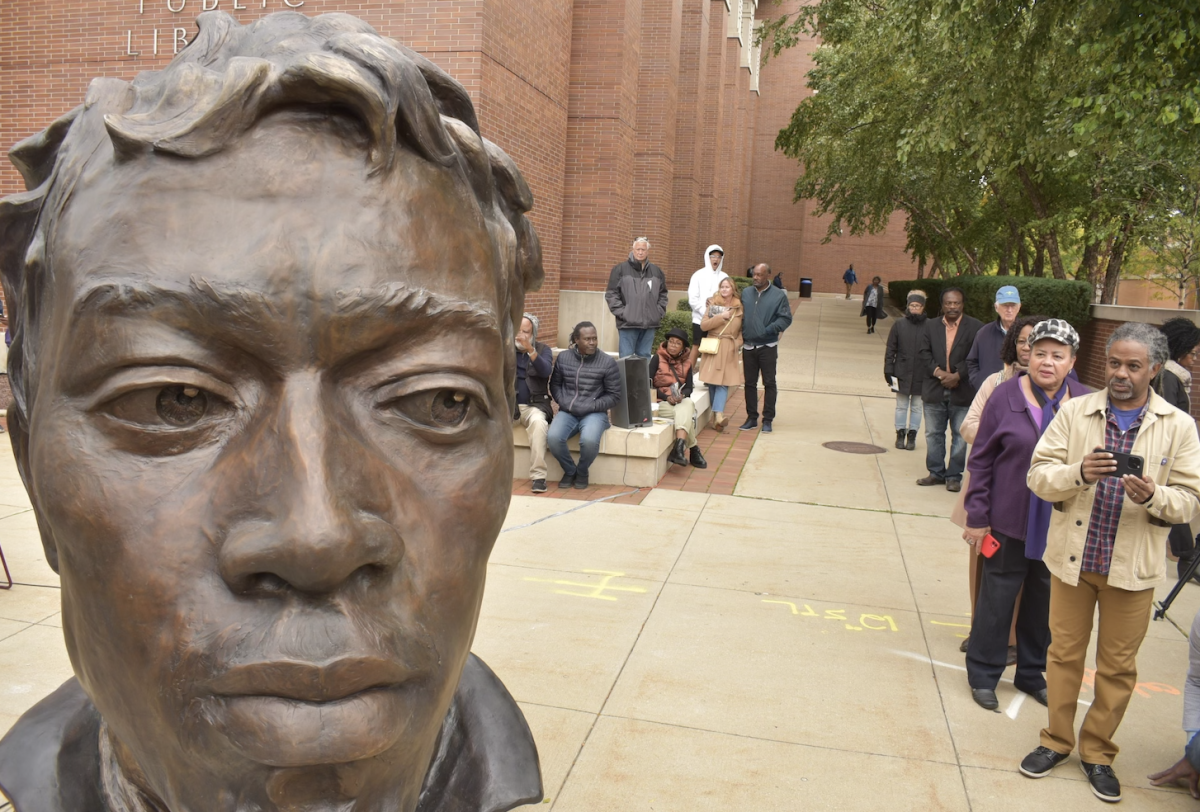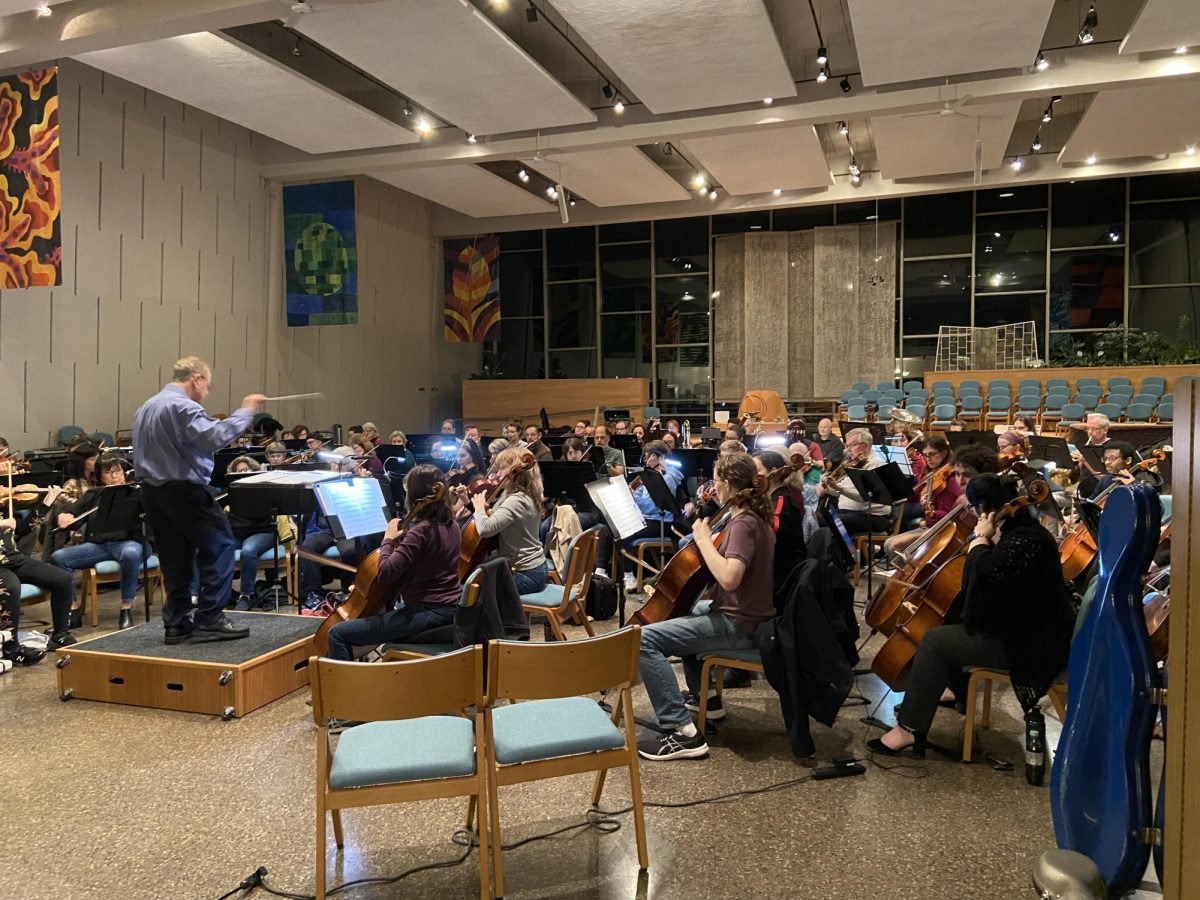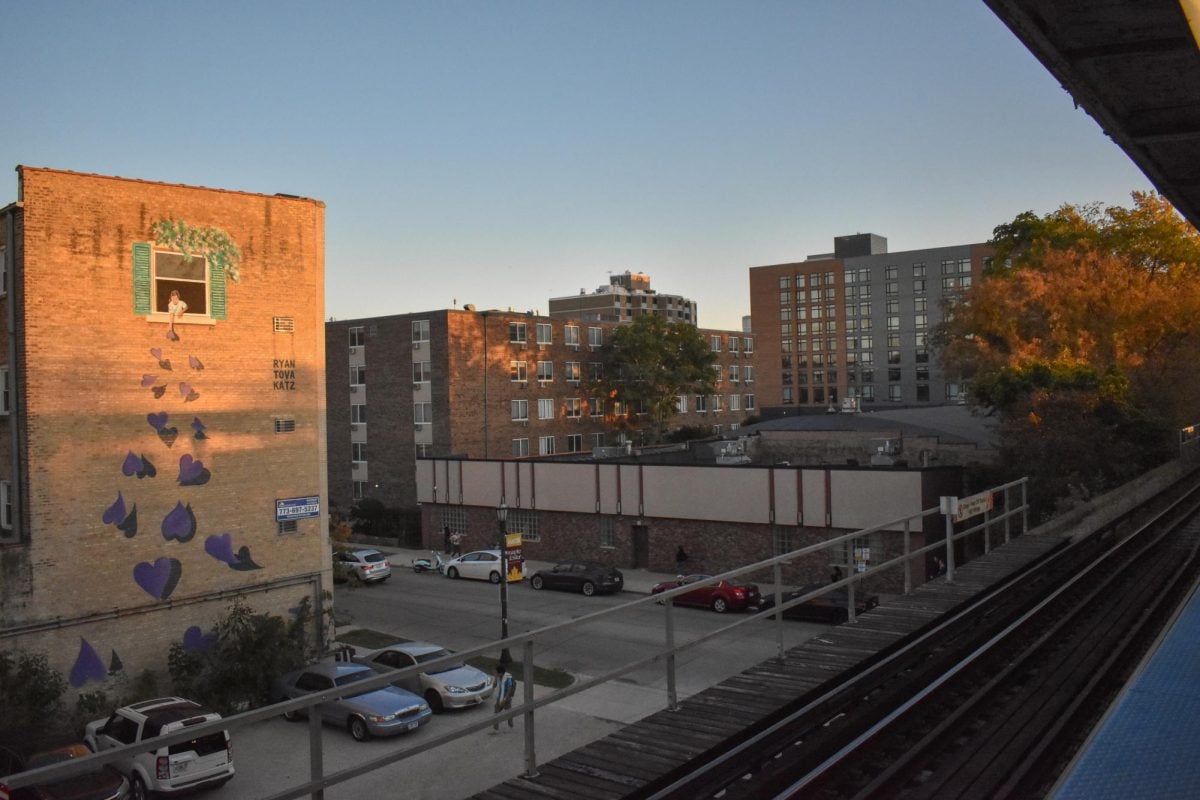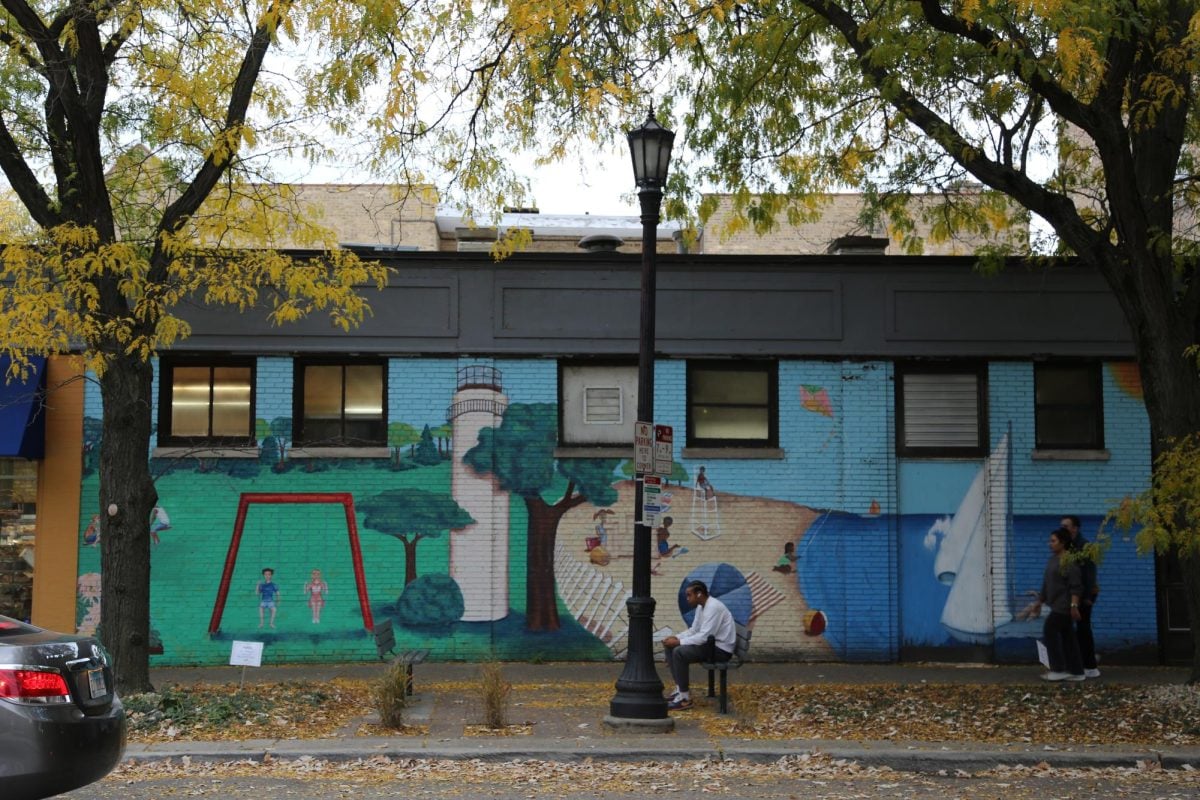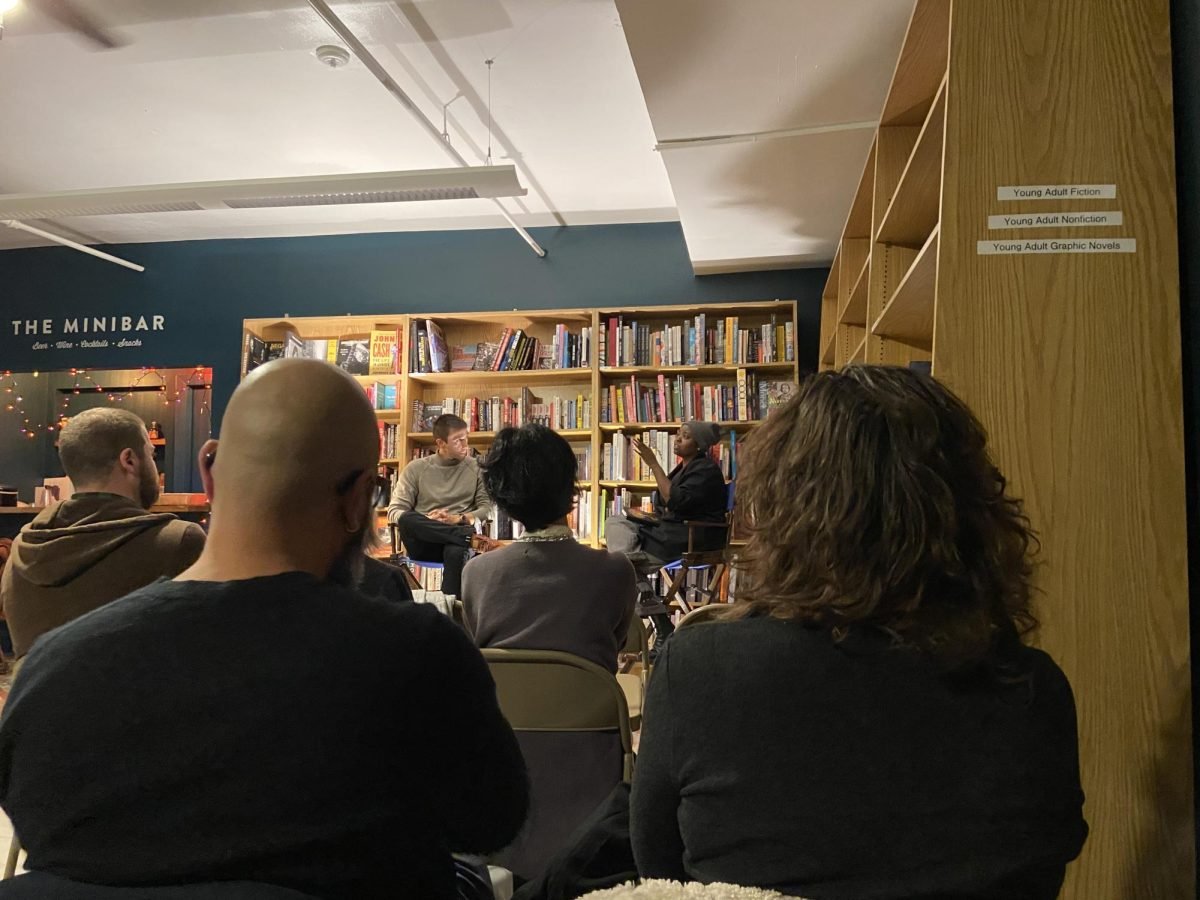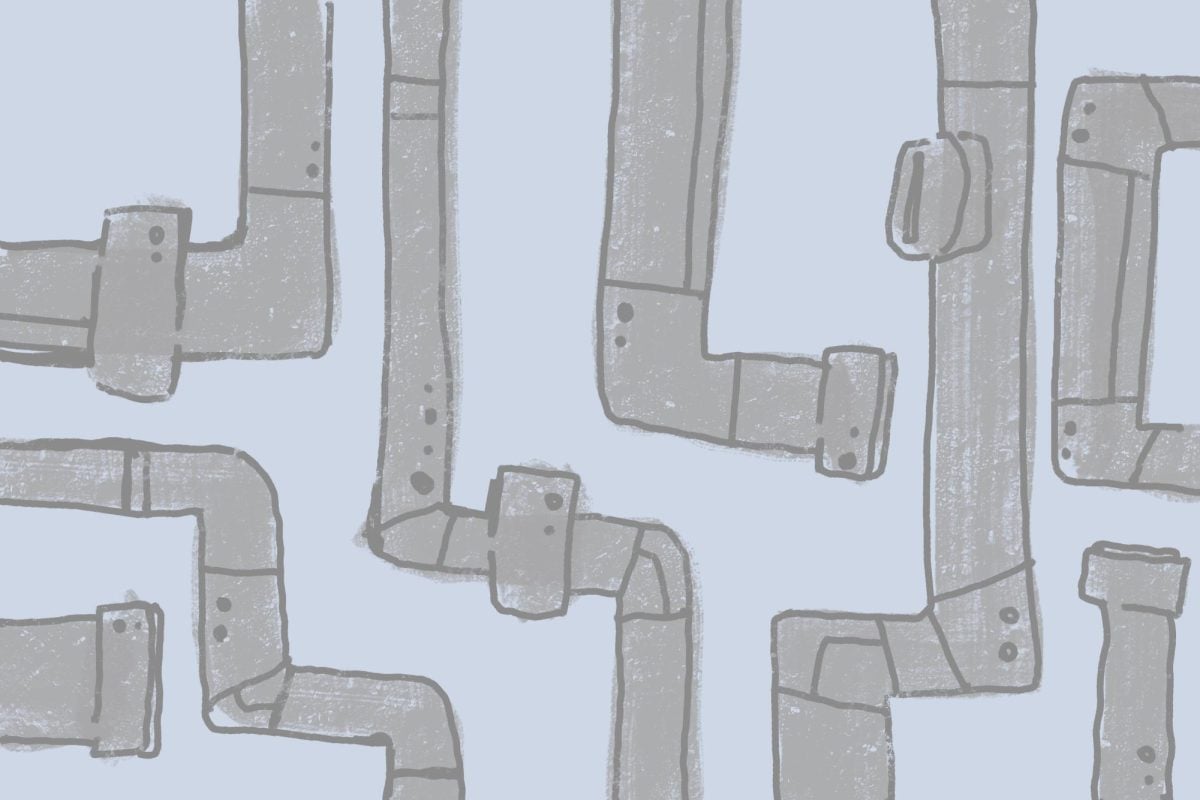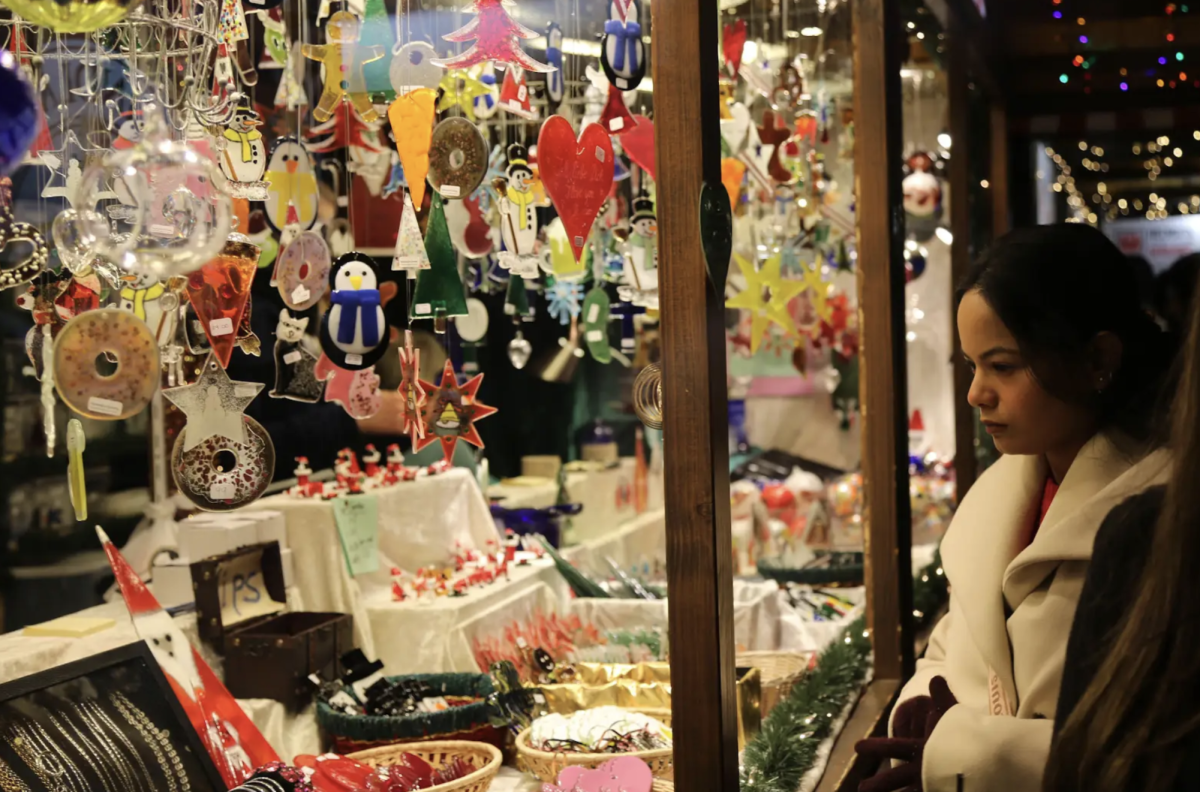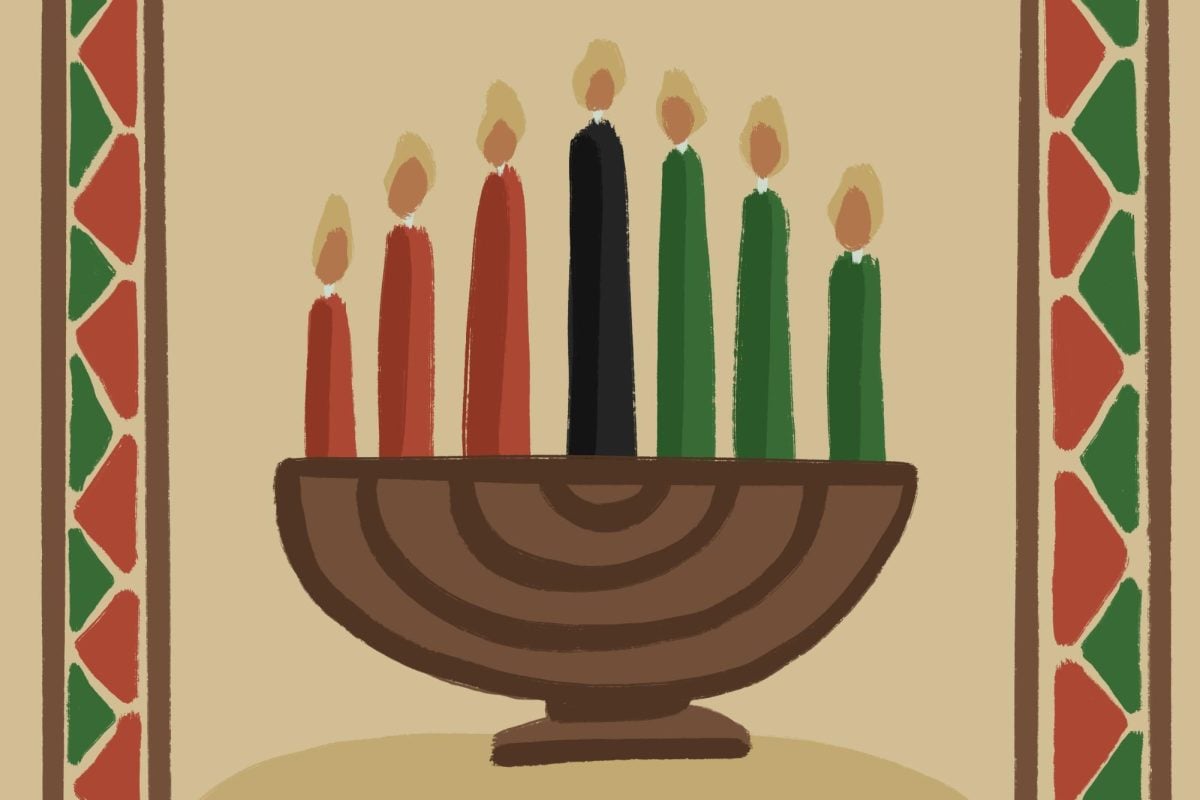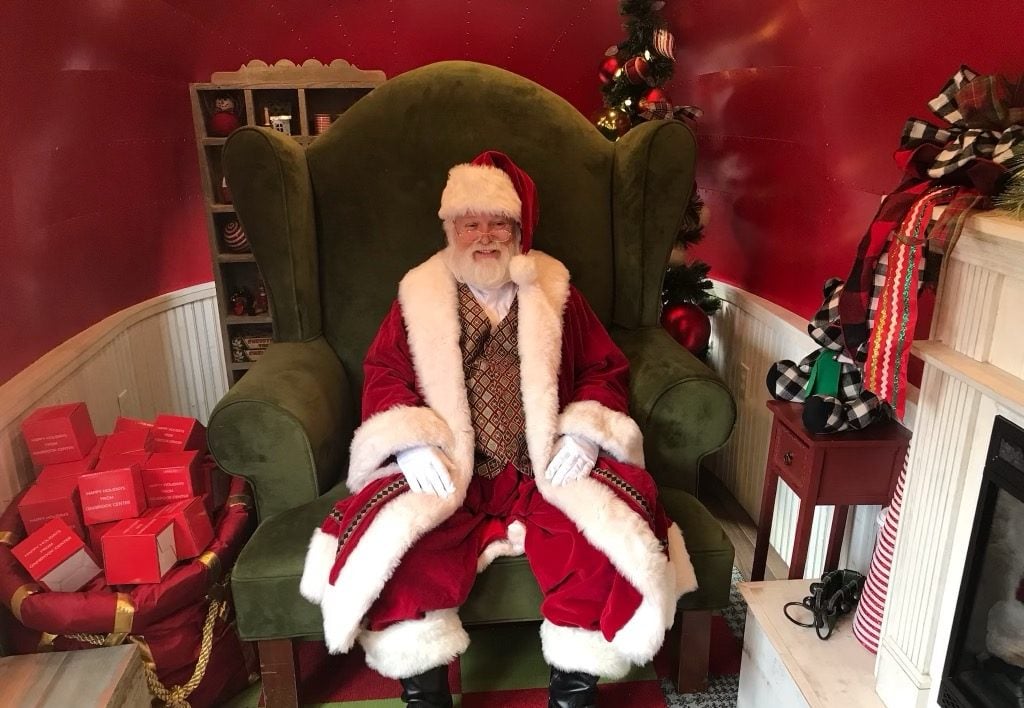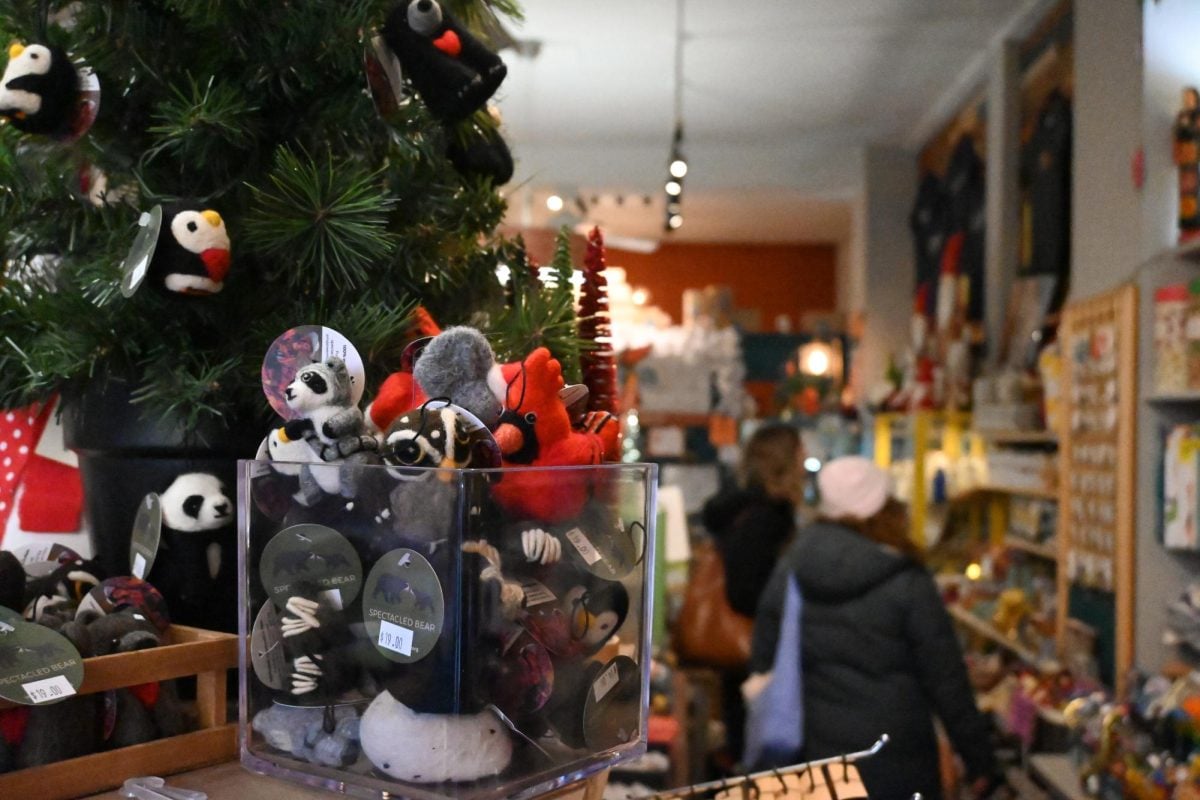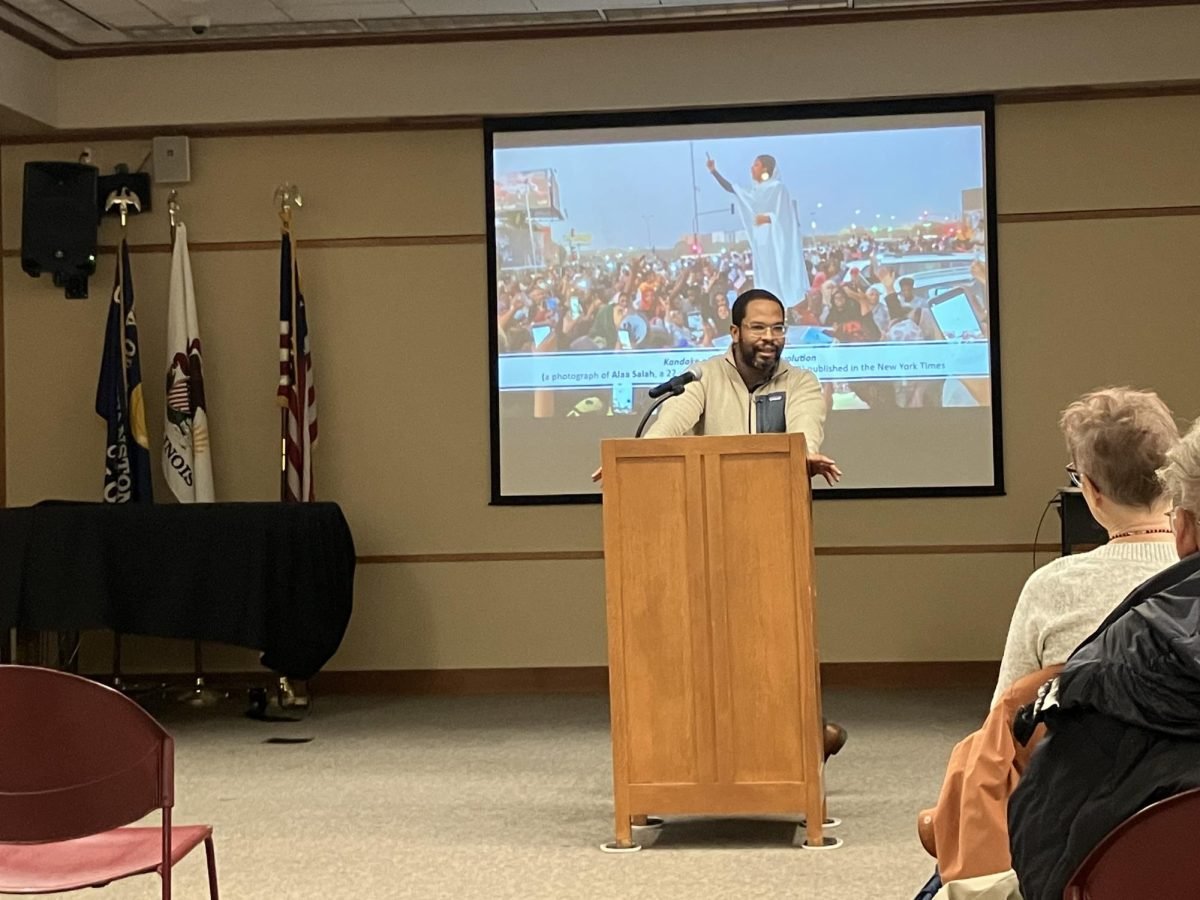A 8-foot bronze bust of Jean Baptiste Point Du Sable, a prominent explorer who is often credited as the founder of Chicago, was unveiled in downtown Evanston Sunday afternoon. Created by sculptor Erik Blome, a former Evanston resident, the artwork found its temporary home at the corner of Church Street and Orrington Avenue, a few steps away from the Evanston Public Library.
Du Sable was born in St. Marc, St. Domingue — present-day Haiti — in the 18th century. Around 1779, Du Sable settled along the Chicago River near Lake Michigan and developed a prosperous trading network. Today, he is often remembered as Chicago’s first non-Indigenous permanent settler.
About 40 attendees gathered to watch the unveiling of the sculpture as several community speakers highlighted Du Sable’s influence on the Chicago region.
“If you look at the role that Jean Baptiste Point Du Sable played in Chicago history and the role that he’s played in a lot of Chicago history books, you learn instantly about the erasure of non-white people in so much of our history,” Mayor Daniel Biss said in a speech at Sunday’s unveiling. “This bust is an opportunity for us to reverse some of that, to create an object in town that we can use to educate ourselves and to spark conversation.”
Speaker Joyy Norris, cultural arts coordinator at Evanston Arts Council, said it wasn’t until high school that she learned how poorly Du Sable’s story has been taught in schools and homes. She said she hopes the sculpture will inspire the community in Evanston and beyond.
Named “Explorer,” the bust in Evanston is a larger version of its bronze companion on Michigan Avenue Bridge — also known as the DuSable Bridge — in downtown Chicago.
Blome, who made the bust at his own expense, chose Evanston to be the first yearlong home of the sculpture of Du Sable. It will tour around the Chicago Metropolitan Area.
“This is sort of a derivative work from my original bust,” Blome said in his opening speech. “It’s just my contribution to this whole thing. If one thing I could inspire you to do is make your own contribution to the efforts and think of how you could maybe make (Du Sable) known and make the history of Chicago a little more accurate.”
The piece of art will serve as representation of the Haitian community in the Chicagoland area. David Le Roy, a son-in-law to the Evanston resident who commissioned the first bronze bust of Du Sable in Chicago, said it has “not only become a symbol of pride for the Haitian community, but also an inspiration for others to follow their dreams.”
Etzer Cantave, president of the DuSable Heritage Association, said the unveiling of the Du Sable bust in Evanston represented a giant step to advance the recognition of Black historical figures in the Chicago area and Midwest.
One of the attendees, Marie-Esther Saint Victor, said Du Sable represents what Chicago is and what it should be — a multinational diverse city.
Evanston and Chicago area residents carry the legacy of Du Sable as a man who prospered from a range of activities including trading, mailing, bakery, smokehouse, merchandise, consignment and portage, Cantave said.
“He put Chicago on demand for intercontinental commerce as a hub for global business,” said Cantave. “That is the measure of the multitalented visionary who gave us Chicago, the third city of the nation and a top-shelf global 73 years ago.”
Email: [email protected]
Twitter: @_megija
Related Stories:
— Haitian Summer Festival aims to share culture with community
—Alumnus Jonathan Katz writes book about Haiti experience, international aid
